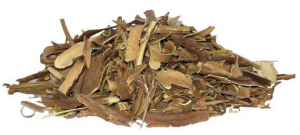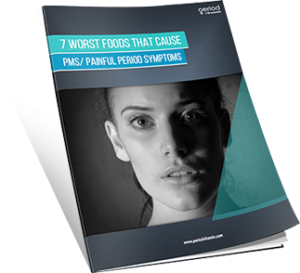 There are so many different symptoms and maladies that women all over the world have to worry about in the weeks prior to the start of their menstrual cycle. Some women experience severe menstrual cramps and period pain.
There are so many different symptoms and maladies that women all over the world have to worry about in the weeks prior to the start of their menstrual cycle. Some women experience severe menstrual cramps and period pain.
Others experience anxiety, depression, and mood swings, while still others have back pain, headaches, nausea and fatigue. Because of this many women are looking beyond the traditional medical community and their drugs, to herbal and homeopathic remedies.
White Willow Bark, officially known as Salix Alba is one of those herbal remedies that women are pursuing.
So does White Willow Bark or White Willow Bark help with menstrual cramps or affect your menstrual cycle?
Herbalists have found that the bark of the White Willow tree has analgesics and anti-inflammatory properties. Since those are two of the types of drugs normally given for menstrual cramps and headaches it stands to reason that White Willow bark will be effective for those symptoms as well. Time and anecdotal information shows that it is.
White Willow bark for menstrual cramps has become common place among women looking for a better solution to this symptom. So the answer to the question does white willow bark and white willow oil help pms is a resounding yes. White willow is a tree found in both the United States and also in Asia and it gets its name from the white hair-like structures on the leaves. It is the bark of this tree that is scraped and boiled to make a tea, oil or compressed into pills.
To be effective white willow bark should be taken one or more weeks prior to the start of a women’s menses or period of bleeding. This would put it right in the pre-menstrual cycle. White willow bark because of its content of salicin is very effective against pain.
“In a German study, the effectiveness of a willow bark extract providing 240 mg of salicin a day was compared to placebo in a 2-week randomized controlled trial in 78 people with osteoarthritis.
After two weeks, the willow bark patients’ pain scores were reduced by 14% compared to the placebo group, which had a 2% increase in pain scores.
A randomized controlled trial published in the American Journal of Medicine examined the use of 120 mg or 240 mg salicin or placebo in 210 patients with a low back pain.
In the fourth and final week of the study, 39% of the group taking 240 mg salicin were pain-free for at least 5 days, compared to 21% in the 120 mg group and only 6% in the placebo group.” altmedicine.about.com/willow_bark.htm
Other studies show other results for white willow bark such as these:
“studies have identified several other components of willow bark that have antioxidant, fever reducing, antiseptic, and immune boosting properties. Some studies show willow is as effective as aspirin for reducing pain and inflammation (but not fever), and at a much lower dose. Scientists think that may be due to other compounds in the herb.”
“Willow bark has been shown to relieve headaches. There is some evidence that it is less likely to cause gastrointestinal side effects than other pain relievers, such as ibuprofen (Advil) and other nonsteroidal anti-inflammatory drugs, do.” umm.edu/altmed/articles/willow-bark.htm
These studies all indicate that more research still needs to be done but there is definitely an analgesic and an anti-inflammatory property to white willow bark that could be very effective in countering the cramps, lower back pain and severe headaches associated with pms.
One of the major reasons for this seems to be that the anti-inflammatory aspects of white willow bark. These anti-inflammatory agents fight the extra prostaglandins that are formed in the woman’s body during her menstrual cycle due to the hormonal imbalance inherent in the cycle. Prostaglandins are notorious in medical circles for causing pain and cell damage. They are the inherent danger in inflammations of all types. In this way white willow bark reduces inflammations and with that reduces pain.
The Egyptians and the Greeks both used white willow bark to combat inflammation and pain. In fact the main ingredient in the most successful over the counter pain killing non-steroidal anti-inflammatory drug (NSAID) is a compound named acetylsalicylic acid (ASA). This compound is a synthetic form of the main ingredient in white willow bark – salicin. This ASA compound was formulated and marketed by the German company, Bayer as aspirin.
Still aspirin is harder on the stomach and digestive system than white willow bark, as is any NSAID. Aspirin has made the Bayer Company a household name and if it were being created today instead of in the late 1800’s it would be a fully regulated non-steroidal anti-inflammatory drug with both prescription doses and over the counter doses just like Motrin or Advil. It seems that the acid in the salicin in white willow bark does not form until after the herb is digested by the stomach. Therefore it does not cause the stomach irritation that is found with all non-steroidal anti-inflammatory drugs.
“Animal research at Cairo University compared a willow bark extract to ASA and found that a willow bark extract was as effective as aspirin in reducing inflammation, even though the salicin content was lower than an equivalent dose of ASA.” altmedicine.about.com/od/completeazindex/a/willow_bark.htm
So what are the dosages at which white willow bark should be used to effectively counter the symptoms of pms and the pain associated with these symptoms?
For the most part as previously mentioned, white willow is used as a tea, an oil or a pill. It is also combined with other vitamin and minerals, but we will discuss that shortly. When white willow bark is used as a tea, the bark is stripped from the tree and steeped in boiling water. If used in this manner it can be taken by the cup 3-4 times in a day. If used as an oil it is usually 60-240 mg a day. This would be true in a tablet or capsule form as well. Anything higher would probably require a discussion with your physician,
However there are some people who should not take white willow bark or at least not take it at the full recommended dosage. This would include anyone who is allergic to aspirin and other non-steroidal anti-inflammatory drugs as well as pregnant or breast feeding woman and anyone with a peptic ulcer or a kidney disease. These folks should probably not take any form of ASA or salicin. Others who can take it with caution or in smaller doses include anyone with any bleeding issues as with any non-steroidal anti-inflammatory drugs.
Anyone with asthma, gout or hyperuricemia should consult a physician and of course don’t give it to children with the flu, flu like symptoms, Reye’s Syndrome or the chicken pox. If you are using Vitamin E, garlic or ginkgo regularly be careful of potential bleeding risks. Many of these risks might be mitigated by using white willow bark in combination with other herbs and vitamins in a compound with the correct dosages.
There are also prescription medications that should not be used in conjunction with white willow and those would include:
- Cox 2 Inhibitor Non-steroidal Anti-inflammatory Drugs (NSAIDS) – these NSAIDS are different from Motrin or Advil and include Celebrex and Bextra. The risk here is the potential development of ulcers.
- Bismuth Subsalicylates – these are things like Maalox, Pepto Bismol, Bismatrol for upset stomachs and loose bowels. Since these drugs contain salicylates there is a risk of over toxicity.
- Carbonic Anhydrase Inhibitors – this includes drugs such as Diamox, Methazolamide, Acetazolamide, Dichlorphenamide. These drugs are used to treat a wide variety of ailments ranging from altitude sickness, glaucoma, and fluid retention to epilepsy. Once again the risk with these drugs is over toxicity as they also contain salicylates.
Like many other herbs, vitamins and minerals, White willow bark is much more effective when combined with other herbs, minerals and vitamins in a compound such as Period Vitamin. If used by itself White Willow bark will take a longer time to be effective than if it is in a compound with other herbs. Period Vitamin is very successful in combining this herb with others in the correct dosages for optimal period and pms symptom relief.
Period Vitamin also contains other herbs like Chaste Berry, Evening Primrose, Black Cohosh, Red Raspberry, Wild Yam and Damania. These herbs treat pms symptoms such as cramping, water retention, bloating, headaches, mood swings, anxiety and depression.
Period Vitamin also contains vitamin and minerals such as Calcium, Magnesium, Iron and Vitamin E, Vitamin B complex including niacin, B3, B12, and B6, Vitamin C, Vitamin E and Vitamin K. These added elements add in both treating of pms symptoms and in increasing the efficiency and efficacy of other ingredients. Elements of these ingredients are known to act as mood enhancements, antioxidants, diuretics, anti-inflammatory agents and boosts to the immune system as well as assisting in the destruction of free radicals. All of these properties are inherent in the fight against pms. So your best bet is to use white willow bark in a combination such as Period Vitamin.


